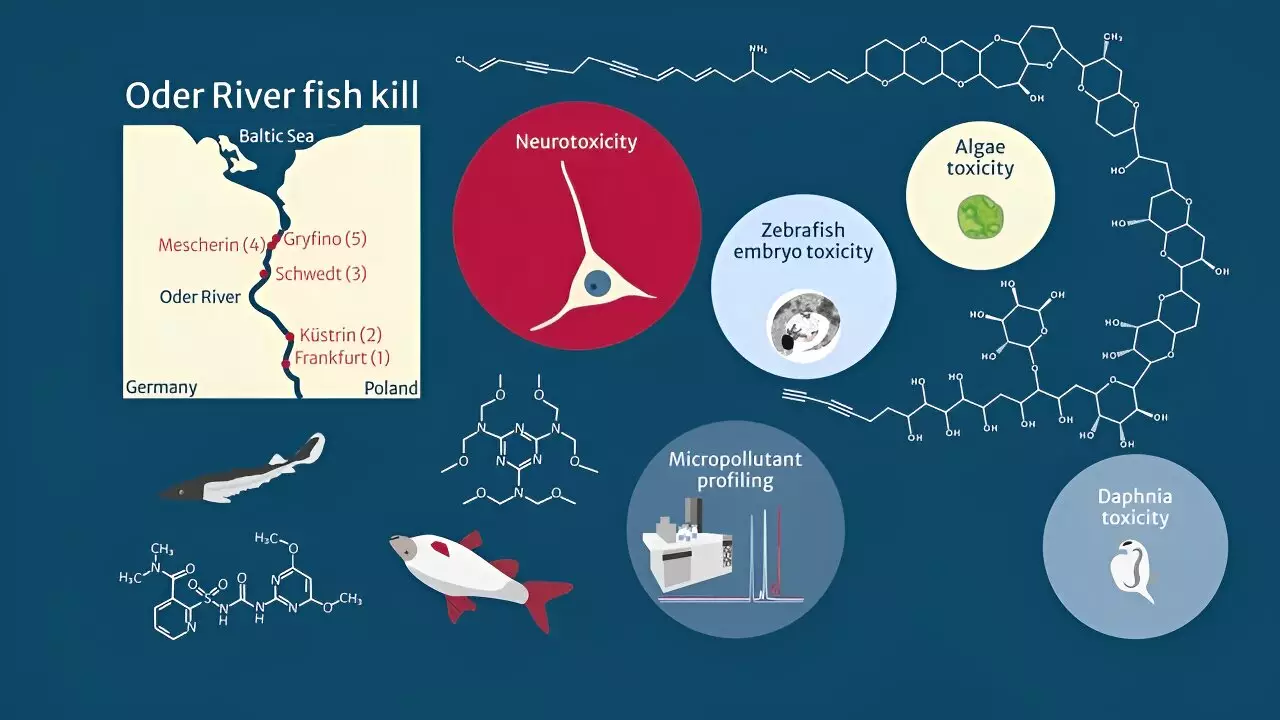In early August 2022, the Oder River, which runs along the German-Polish border, was the scene of a truly devastating environmental disaster. Tons of dead fish, mussels, and snails were spotted floating on the river’s surface, indicating a serious issue brewing beneath the water’s surface. Upon further investigation, scientists discovered that a deadly cocktail of factors had led to this mass mortality event.
One of the key players in this disaster was the brackish water algae Prymnesium parvum, which produced an algal toxin known as prymnesin. This toxin had a lethal effect on various aquatic organisms, leading to the death of up to 60% of fish biomass and up to 85% of mussel and snail biomass in the river. The excessive salinity, high water temperatures, low water levels, and excessive nutrient and wastewater inputs created the perfect conditions for this toxic algal bloom to occur.
However, the situation was further exacerbated by the presence of organic micropollutants in the water. A team of scientists led by the Helmholtz Center for Environmental Research (UFZ) collected and analyzed water samples from the Oder River. They identified over 120 organic micropollutants in the samples, including chemicals like the flame retardant tris(1-chloro-2-propyl)phosphate and the polymer additive hexamethoxymethylmelamine.
The researchers used a risk quotient analysis to assess the extent of stress these micropollutants were imposing on aquatic organisms. The results were concerning, with mixture risk quotients (RQmix) ranging from 16 to 22 at the sampling sites. These values indicated a significant risk to aquatic life from the combination of algal toxins and micropollutants present in the water.
Laboratory experiments further revealed the complex interactions between prymnesins and micropollutants in the water. Neurotoxic effects were observed in algae, water fleas, zebrafish embryos, and even human nerve cells in vitro. The presence of prymnesins dominated the neurotoxic effects, but the micropollutants also played a role in exacerbating the overall impact on aquatic organisms.
The findings of this study underscore the urgent need for action to address chemical pollution in the Oder River and other bodies of water. The researchers emphasized that while the concentrations of these pollutants may not be unusually high, their combined effects pose a significant risk to aquatic ecosystems. Steps must be taken to reduce the input of micropollutants into water bodies and prevent further ecological disasters like the one that unfolded in the Oder River in August 2022.
The deadly cocktail of factors that led to the mass mortality event in the Oder River serves as a stark warning of the consequences of chemical pollution in our waterways. It is crucial that we take heed of these findings and take concrete steps to protect our freshwater ecosystems from the devastating effects of toxic algal blooms and micropollutants. Only through concerted efforts to reduce pollution and safeguard our water resources can we hope to prevent similar tragedies in the future.



Leave a Reply